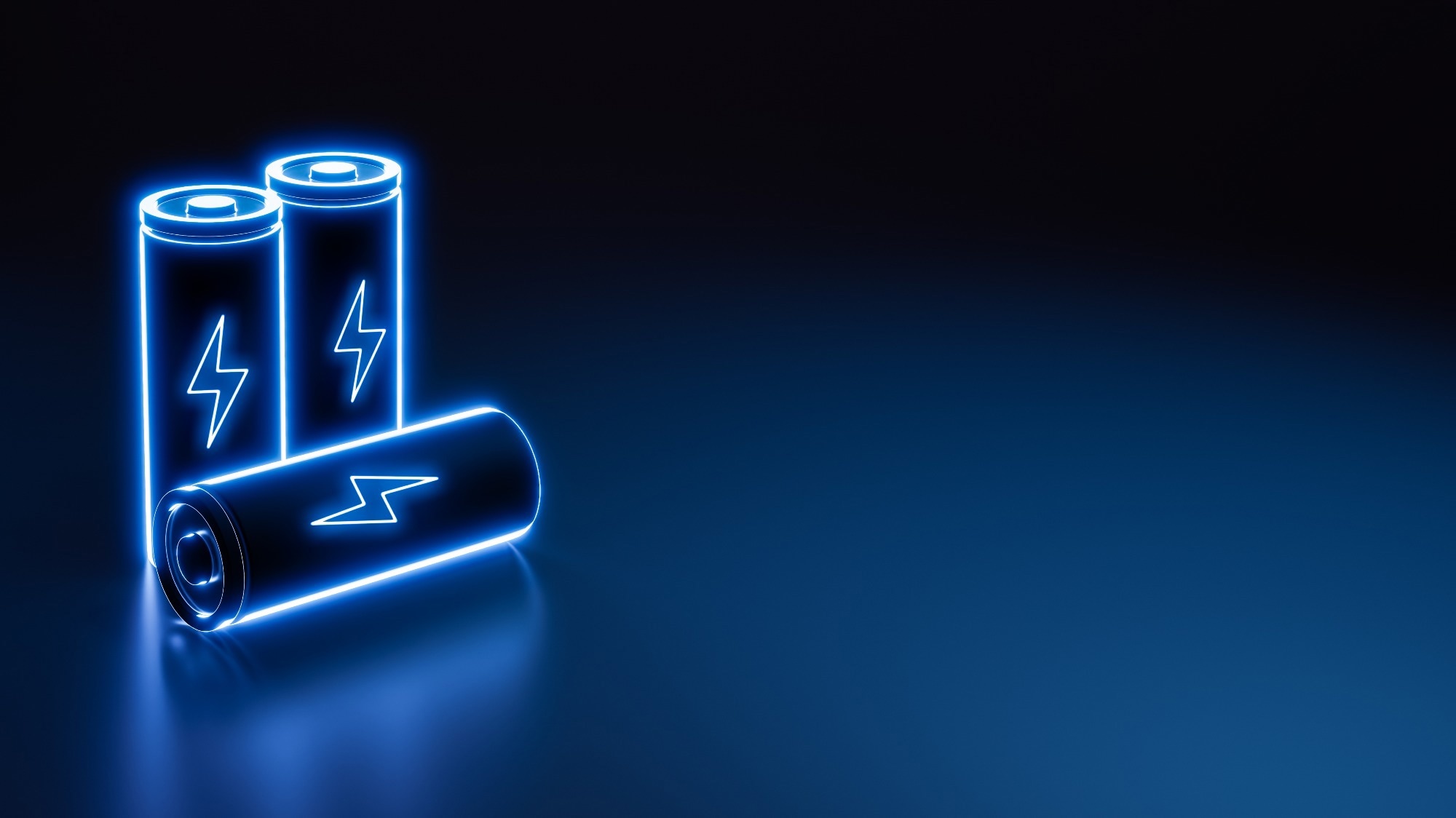Boise State University scientists have devised a new method for creating new lithium-ion battery materials. Starting with niobium oxide, an amorphous or a material that lacks long-range order, the scientists found that cycling the material with lithium provokes a transition to a novel crystalline Nb2O5 anode with exceptional Li storage and fast cycling.

Image Credit: Shutterstock.com/ Black_Kira
This method could be used to create other lithium-ion battery materials that are difficult to produce using traditional methods.
The study was published in Nature Materials by scientists from the labs of Hui (Claire) Xiong, a professor of materials science and engineering at Boise State University, and Shyue Ping Ong, a professor of nanoengineering at the University of California San Diego.
The search for new lithium-ion battery materials has taken on new urgency. Rising gas prices have fueled a surge in demand for electric vehicles (EVs), as well as the lithium-ion batteries that power them. However, lithium-ion batteries are still prohibitively expensive and charge slowly.
Lithium-ion batteries are the leading technology for the rechargeable battery market, but there’s also an increase in the demand for the battery to have high energy and faster charging times.
Pete Barnes, Study Lead Author and PhD Alumnus, Electrochemical Energy Materials Lab, Micron School of Materials Science and Engineering
“If you want to charge your EV for 15 minutes and then get on the road for the next 200 or 300 miles, you need new battery electrodes that can be charged at a very fast rate without much loss in performance,” Barnes said.
The anode is one of the most significant charging bottlenecks in today’s lithium-ion batteries. The most common anode material is graphite, which is very energy dense yet cannot be charged too rapidly due to the risk of explosions or fires caused by a process called lithium metal plating. Given the lower risk of lithium plating at low voltages, intercalation metal oxides, such as the rock salt Nb2O5 material found by the team, are appealing alternative options for anodes.
Xiong’s group created a revolutionary new method called electrochemically induced amorphous-to-crystalline transition to produce a brand-new anode material. The new electrode can reach high lithium storage of 269 mAh/g at a charging rate of 20 mA/g while also maintaining a high capacity of 191 mAh/g at a charging rate of 1 A/g.
The most exciting aspect of this work is the discovery of a completely new approach to creating novel lithium-ion battery electrodes. The trick is to start from a higher energy phase, such as an amorphous material. Just cycling the material with lithium allows us to create new crystalline arrangements that exhibit improved properties beyond those made via traditional means such as solid-state reactions.
Hui (Claire) Xiong, Professor, Materials Science and Engineering, Boise State University
The anode’s exceptional rate of performance is attributed to its disordered rocksalt (DRX) structure, which is similar to regular kitchen table salt but with the Li and Nb atoms randomly distributed. While DRX cathode materials are well recognized, DRX anodes are uncommon.
Yunxing Zuo, a Ph.D. alumnus of Ong’s Materials Virtual Lab at UC San Diego, demonstrated using computational methods that implanting Li into amorphous Nb2O5 allows materials scientists to obtain metastable materials.
The team also created a metric to recognize other metal oxides that could be synthesized in the same way. The computations also demonstrate that the DRX structure has fast lithium diffusion paths, resulting in superior rate performance.
We believe this work to be merely the beginning of a completely new way of thinking about materials synthesis. Atoms like to arrange themselves in certain ways. When we make materials the traditional way, we usually get the same arrangements repeatedly. This new approach opens up a promising avenue for creating other unconventional metal oxides.
Shyue Ping Ong, Professor, Nanoengineering, University of California San Diego
Drs. Sungsik Lee, Justin Connell, Hua Zhou, and Yuzi Liu from Argonne National Laboratory, Profs. Paul Davis, Paul Simmonds, Dr. Darin Schwartz from Boise State, and Drs. Yingge Du and Zihua Zhu from the Pacific Northwest National Laboratory also collaborated on the project.
Journal Reference:
Barnes, P., et al. (2022) Electrochemically induced amorphous-to-rock-salt phase transformation in niobium oxide electrode for Li-ion batteries. Nature Materials. doi.org/10.1038/s41563-022-01242-0.